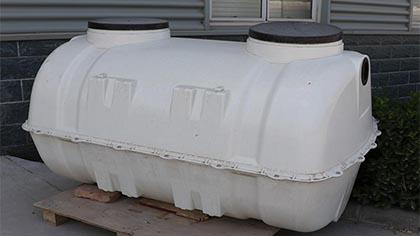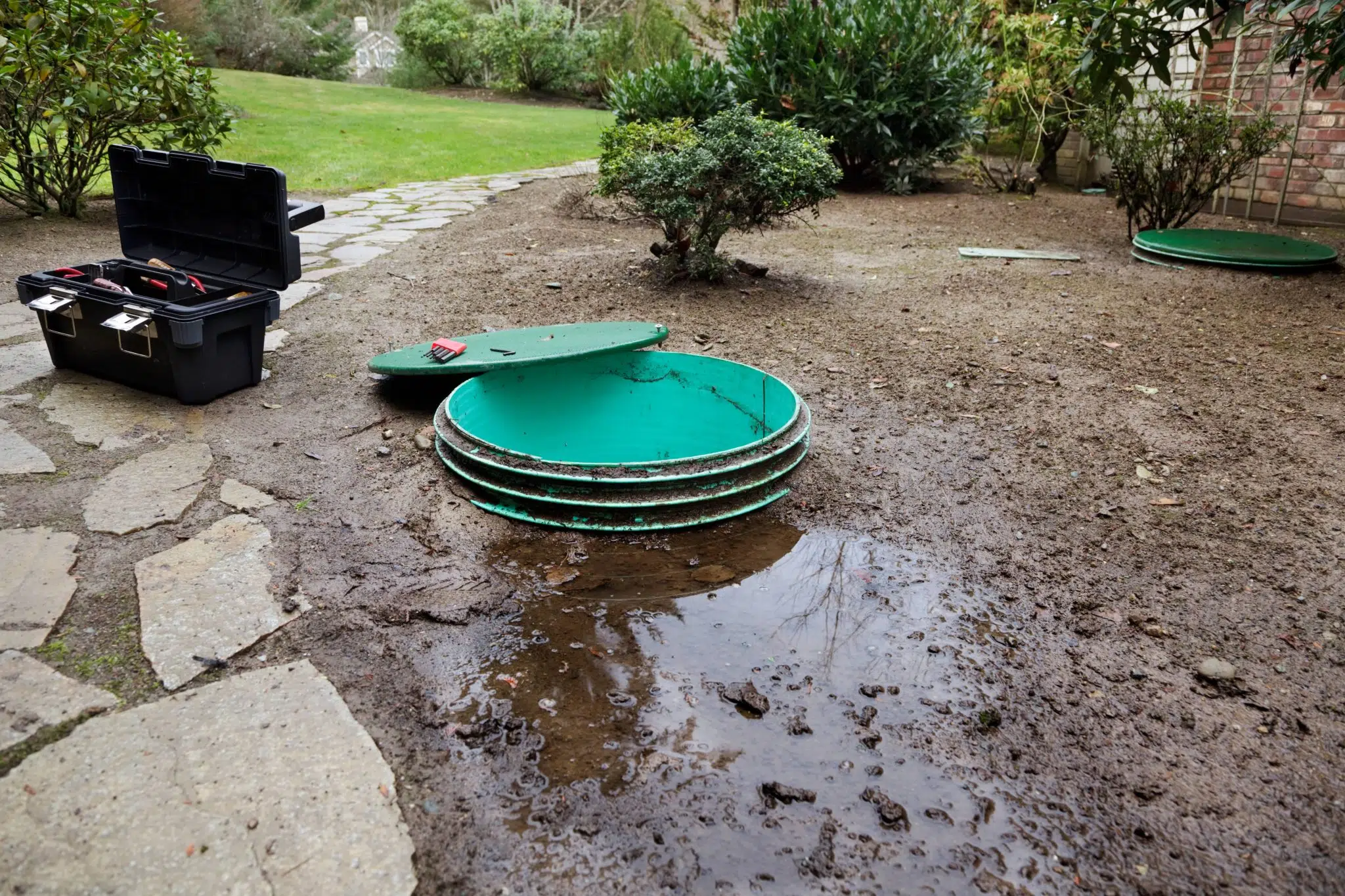Trusted Septic Tank Pumping Company: Dependable and Efficient Services
Wiki Article
Deciphering the Language of Septic System Solutions: A Reference of Terms for Clear Interaction and Comprehending
In this post, we'll assist you translate the language of septic storage tank solutions with an useful glossary of terms. From comprehending the essentials of your septic tank to dealing with sludge build-up, we'll offer clear descriptions to ensure clear interaction and understanding.Septic Tank: Recognizing the Basics

If you are unfamiliar with septic systems, they are underground containers that deal with and hold wastewater from your household. These storage tanks are a crucial part of your home's plumbing system, in charge of safely and properly handling the waste produced by your day-to-day tasks. Recognizing the basics of sewage-disposal tanks is critical in order to guarantee their correct functionality and avoid pricey fixings.
A septic tank is composed of two major elements: the storage tank itself and the drainfield. The solids settle at the base of the tank, creating a layer of sludge, while the fluids, understood as effluent, surge to the top.
Routine upkeep of your septic system is important to stop issues such as obstructions, backups, and system failures. It is recommended to have your container pumped every three to 5 years, relying on its dimension and use. Furthermore, it is very important to be mindful of what you flush down the drains and toilets, as specific chemicals and products can hurt the microbial equilibrium in the container.
Drainpipe Area: The Duty of Soil in Waste Disposal
To keep the appropriate functionality of your septic container system, it is vital to comprehend the role of the drain field in garbage disposal and exactly how the surrounding dirt plays an essential role in this procedure. The drainpipe field, additionally called the leach field or absorption area, is an essential component of a septic tank. Its primary function is to filter and treat the wastewater that drains of the septic container.Once the wastewater leaves the sewage-disposal tank, it is dispersed evenly across the drainpipe area with a network of pipelines or trenches. The drain field contains a layer of crushed rock or rock, which aids to distribute the wastewater uniformly and promote reliable filtering. Below the crushed rock layer, there is a layer of dirt that acts as a natural filter.
The dirt in the drainpipe area plays a crucial role in the therapy of wastewater. As the wastewater percolates via the soil, it undergoes an all-natural process of purification and purification. The soil functions as a biological and physical filter, removing dangerous microorganisms, viruses, and other contaminants from the wastewater.
The structure and high quality of the soil are crucial for the efficient functioning of the drain field - septic tank pumping. The dirt ought to have good percolation prices to allow the wastewater to relocate through it easily. Furthermore, the dirt should have enough oxygen levels to sustain the growth of cardio microorganisms, which help in the breakdown of natural issue in the wastewater

Effluent: the Fluid Waste From Your Septic Tank
As the wastewater leaves the drain field, it is referred to as effluent, and it is necessary to comprehend the characteristics and management of this liquid waste from your septic system. Effluent is the term used to explain the cured wastewater that drains of your septic system and into the drainpipe field. septic tank pumping. This fluid waste contains a mixture of water, natural issue, and liquified solidsEffluent ought to be clear and cost-free of any unpleasant odors. If you discover any type of foul scents or staining, maybe a sign of a problem with your septic tank. Routine maintenance and pumping of your septic tank can help guarantee that the effluent continues to be clean and complimentary from impurities.
Correct monitoring of effluent is critical to stop contamination of the surrounding environment. The drain area is made to filter and deal with the effluent prior to it gets in the dirt. It is crucial to prevent any type of tasks that can potentially damage the drainpipe area, such as car park lorries or growing trees with deep origin systems.
Sludge: Managing Strong Waste Buildup
When handling strong waste accumulation in your septic tank, proper administration of sludge is crucial. Sludge refers to the thick layer of strong waste that builds up at the end of your septic system in time. If not handled appropriately, sludge can cause different issues, such as obstructing, back-ups, and even system failure.Normal upkeep is important to avoid sludge accumulation. It is suggested to have your septic storage tank pumped every three to 5 years, relying on the dimension of your home and the container's ability. Pumping eliminates the gathered sludge, allowing your septic tank to function effectively.
Along with regular pumping, there are a few actions you can take to reduce sludge build-up. Be mindful of what you purge down the drain. Stay clear of disposing of non-biodegradable items, such as paper towels, diapers, and hygienic items. These can contribute to sludge accumulation. Second, think about making use of septic-safe products that won't interrupt the natural microbial equilibrium in your system.
Pumping: Preserving the Health of Your Sewage-disposal Tank
Maintain the wellness of your septic news system by regularly pumping it. Pumping is a necessary upkeep job that helps avoid problems and makes certain the correct performance of your septic tank. Over time, solid waste and sludge build up in the storage tank, which can result in clogs, backups, and also system failure. Pumping gets rid of these accumulated solids, allowing the tank to proceed running efficiently.Regular pumping is recommended to protect against the sludge from reaching high degrees. The regularity of pumping depends on various variables such as the size of the container, the number of owners in your household, Get the facts and the use of water. Typically, sewage-disposal tanks need to be pumped every three to five years. It's essential to note that every system is one-of-a-kind, and it's best to seek advice from with a professional to establish the optimal pumping routine for your certain scenario.
Verdict
So there you have it: a convenient reference of terms to assist you much better recognize the language of septic container services. Whether it's discovering the basics of sewage-disposal tanks, comprehending the duty of the drainpipe field, or knowing exactly how to deal with sludge build-up, this glossary will certainly ensure clear interaction and a far better understanding of your septic tank. Keep these terms in mind to maintain the health and wellness and functionality of your sewage-disposal tank.A septic container consists of two primary elements: the storage tank itself and the drainfield.Regular upkeep of your septic storage tank is essential to prevent issues such as obstructions, back-ups, and system failings.To maintain the appropriate performance of your septic storage tank system, it is essential to understand the function of the drain area in waste disposal and just how the surrounding dirt plays an essential duty in this process. It is advised to have your septic tank pumped every three to 5 years, depending on the size of your house and the storage tank's capability. Whether it's discovering about the fundamentals of septic tanks, comprehending the function of the drain area, or knowing how to deal with sludge build-up, this reference will make sure clear communication and a far better site link understanding of your septic system.
Report this wiki page